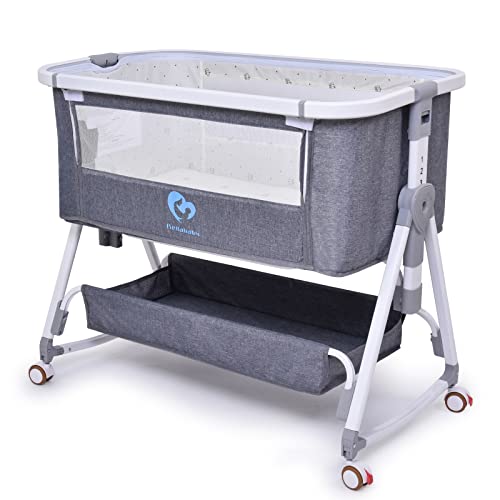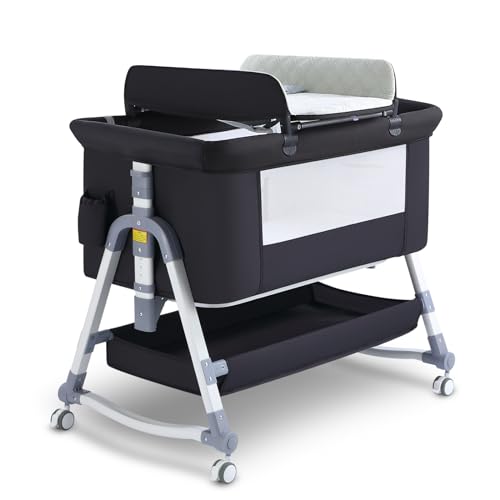The 10 Most Terrifying Things About Cot Sales
페이지 정보

본문
 Cot Sales and Ambulance Services
Cot Sales and Ambulance Services Cot sales are increasing due to the higher rates of birth and increased awareness about safety for babies. Numerous companies are also introducing new models of cots that can be turned into day beds.
Cot sales are increasing due to the higher rates of birth and increased awareness about safety for babies. Numerous companies are also introducing new models of cots that can be turned into day beds.To ensure the accuracy of government price calculations, it is crucial to follow an exact and reliable method of assigning COT designations. A well-documented SOP and a thorough audit process are also essential.
The demand for ambulances is increasing.
Globally, the market for ambulances is growing rapidly as traumatic accidents and chronic illnesses are becoming more frequent. These conditions are often accompanied by medical emergencies which require prompt and prompt intervention to save lives. This increased demand highlights the importance for public health to have efficient emergency response systems, as well as easily accessible healthcare facilities.
Ambulances transport patients to hospitals and healthcare facilities, and provide out-of hospital care while in transit. The demand for these vehicles is driven by factors like the increasing number of road accidents, a rising number of seniors and favorable reimbursement policies. Air ambulances are also in high demand due to the necessity for fast and reliable medical transport across long distances.
The global ambulance market can be classified into three categories: hospital-based service, independent service providers, and government-run services. Hospital-based ambulance services are run mostly by healthcare facilities as well as private companies. The independent segment, which includes privately-owned and operated air ambulances is expected to grow quickly in the forecast time. The government-operated sector, on contrary, includes ambulances operated by municipal, state, or military units.
The market for ambulance services in the world is divided into three types of fuel including gasoline, diesel or electric. The diesel segment is expected to bring in the most revenue share over the forecast period. The reliability and performance of diesel-powered ambulances is highly regarded by fleet owners. Furthermore, the fuel efficiency of diesel engines is increasing with technological advancements. The growth of the diesel sector however, is hindered by strict emission regulations.
The demand for ambulances is also driven by the emergence of new medical technology. This includes telemedicine capabilities, which allow ambulances to communicate with doctors in real-time and receive treatment-related instructions. These technologies are helping to improve the outcomes of patients and reduce emergency department (ED) admissions.
North America dominates the global ambulance services market, followed by Europe and Asia Pacific. The market in North America is driven by a huge demand for high-quality healthcare services and a well-established healthcare system, and favorable reimbursement policies. Furthermore, the strategic efforts of market players and the growing the geriatric population of the region are also boosting the potential of growth in the market.
Growing expenditures in the healthcare sector
The healthcare sector is responsible for a significant portion of the nation's economic activity. It also contributes to the development of human capital and increases productivity. The increase in spending in this sector is therefore important for economic performance. It is not always evident how spending on health care impacts a country's economic performance. Numerous factors affect growth and health care spending. These variables can differ across different industries and regions.
In the US, private businesses, households, and government are the primary sources of health care financing. Private business and household expenses are financed by private health insurance premiums and out-of-pocket expenditure. Government program spending is also paid for (either through dedicated taxes or general revenues). The spending of the government program is an important driver of health spending trends. During the COVID-19 outbreak, government spending on long-term, non-hospital care services soared significantly. More than three-quarters (33 percent) of all health expenditures in the United States are accounted for by government programs.
Gross Domestic Product (GDP) is often used to measure health expenditures. GDP is a measure of a country's total output. In the case health care, it refers to the production of goods and services. A rising economy is associated with a higher GDP and an increase in the number of jobs. This is the reason it's essential to understand the impact of healthcare expenditures on GDP and other economic indicators.
When designing public policies or evaluating new healthcare initiatives, it is crucial to consider the impact of healthcare spending on economic performance. Numerous studies have proven that increased spending on healthcare improves the productivity of human resources as well as boost economic performance (1,2). These effects are a bit complex and can vary based on which sector and population groups are affected by the expenditure.
In order to ensure that government pricing values are consistent and accurate it is crucial to have a documented procedure for assigning COTs. Inconsistency could lead to inaccurate data, which could result in unfavorable Medicaid Rebates, NFAMP or 340B/PHS Ceiling Price. Achieving accurate COT designations can result in chargebacks, restrictions on contracts and other financial implications. To avoid such pitfalls, it is recommended that a Cot sale assigning method be established based on COT SOPs from the manufacturer and cheap cot beds reference library.
Demand for convertible cribs for babies
Parents are willing to spend more on their infants ' products as they are becoming more sophisticated. This has led to an increase in the demand for cribs that can be transformed into a toddler bed or a daybed. These conversion kits can be used to prolong the life of a crib and save money. Additionally, they help parents avoid having to search for a suitable full size bed for their child. In the coming years the demand for cribs of this kind will continue to rise.
The global market for cribs and cots for infants is expanding rapidly, driven by the rising birth rate and the rising standard of living worldwide. The market encompasses various essential baby products like strollers, monitors, cribs, and cribs. The increasing number of nuclear families and working parents is driving the demand for high-quality, safe and multi-functional baby furniture. Leading brands like DaVinci Baby offer multifunctional cribs which can be transformed into an adult bed or full-sized beds. This allows parents to maximize their investment.
These cribs are often constructed of sturdy wood or metal which makes them an excellent option for infants and young children. They are also easy to clean, making them a popular option for families with busy schedules. A lot of them are built with security features, like side guard rails that are built in and a mattress latch. Some even feature adjustable mattress heights to accommodate different age groups.
Baby cribs and cots can be found in specialist stores and online distribution channels. They are also available in a wide selection of styles, ranging from modern to traditional. Some models come with features such as sensorSafe technology and airbags to increase security and safety. The use of environmentally friendly materials in the production process is also growing.
Since babies spend an average of two and quarter years in their cots they play a significant role of their development. Manufacturers have responded by developing new products that combine comfort, style and function. Cradlewise is one example. It has a smart crib that uses artificial intelligence to adapt to the sleeping patterns of a baby. It also comes with a bassinet mode for newborns, which offers both safety and comfort.
Demand for nursery cots with multiple functions
The global market for baby cots is expected to expand rapidly, driven by changing consumer preferences and technological advances. Regional dynamics also impact the market. For instance, Asian countries are a major market contributor to the growth of the market, thanks to rapid urbanization and rising disposable incomes. Parents in these countries are looking for multifunctional products that save space and offer convenience. Companies that can align their product offerings with these preferences are poised to thrive in the market.
Baby cots are becoming increasingly sophisticated, with manufacturers incorporating intelligent technology to enhance functionality and user-friendliness. For instance, a recent generation of smart cots has IoT capabilities that let parents monitor their infants from their mobile devices. These advancements make cots for babies more adaptable and attractive, which will increase their popularity.
The demand for multi-functional cheap cots has also been boosted by the increasing trend of urban living. Parents living in smaller apartments want furniture that maximizes the space available. Therefore cots that are transformed into playpens or adult beds are attractive to many consumers. Safety is a major concern among many families. This has resulted in a rise in the demand for cots that meet strict regulatory standards.
Consumers are also looking for multi-functional cots that offer stylish designs. Buyers, particularly millennial parents, are increasingly attracted by brands that emphasize quality and design. This age group is more technologically savvy and research-oriented which has helped fuel the demand for furniture for babies that blends functionality with aesthetics.
The changing economic climate is another factor that influences small cot beds sales. Families tend to prioritize necessities in times of tight budgets. Some manufacturers have responded by offering affordable alternatives that allow them to compete with lower-cost competitors on the market. The rise of ecommerce has also changed the purchasing behavior of consumers, allowing them to access more baby products at a lower cost.
Long-term, the market for multifunctional baby cribs will continue to expand. This growth is supported by new trends and a greater emphasis on family values. The market's growth may be slowed by obstacles like fluctuating raw material costs and fierce competition. It is crucial that manufacturers constantly develop and adjust to the changing market.
- 이전글7 Tricks To Help Make The Most Out Of Your Assessments For Adhd In Adults 24.11.23
- 다음글놀라운 순간: 삶의 놀라움을 발견 24.11.23
댓글목록
등록된 댓글이 없습니다.